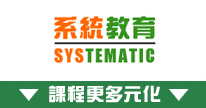1. Privacy Governance
1.1 Privacy Governance
1.1.1 Personal Information
1.1.2 Privacy Principles (e.g., Privacy by Design, Consent, Transparency)
1.1.3 Privacy Laws and Regulations
1.1.4 Privacy Documentation (e.g., Policies, Guidelines)
1.2 Privacy Operations
1.2.1 Organizational Culture, Structure, and Responsibilities
1.2.2 Vendor and Supply Chain Management
1.2.3 Incident Management
1.2.4 Data Subject Rights, Requests, and Notification
2: Privacy Risk Management and Compliance
2.1 Risk Management
2.1.1 Risk Management Process and Policies
2.1.2 Privacy-Focused Assessment (e.g., Privacy Impact Assessment (PIA))
2.1.3 Privacy Training and Awareness
2.1.4 Threats and Vulnerabilities
2.1.5 Risk Response
2.2 Compliance
2.2.1 Privacy Frameworks
2.2.2 Evidence and Artifacts
2.2.3 Program Monitoring and Metrics
3. Data Life Cycle Management
3.1 Data Collection and Processing
3.1.1 Data Inventory, Dataflow Diagram, and Classification
3.1.2 Data Quality (e.g. Accuracy)
3.1.3 Data Use Limitation
3.1.4 Data Analytics (e.g., Aggregation, AI, Data Warehouse)
3.2 Data Persistence and Destruction
3.2.1 Data Minimization
3.2.2 Data Disclosure and Transfer
3.2.3 Data Storage, Reten
4. Privacy Engineering
4.1 Technology Stacks
4.1.1 Infrastructure and Platform Technology (e.g., legacy, cloud computing)
4.1.2 Devices and Endpoints
4.1.3 Connectivity
4.1.4 Secure Development Life Cycle
4.1.5 APIs and Cloud-Native Services
4.2 Privacy-Related Security Controls
4.2.1 Asset Management
4.2.2 Identity and Access Management
4.2.3 Patch Management and Hardening
4.2.4 Communication and Transport Protocols
4.2.5 Encryption and Hashing
4.2.6 Monitoring and Logging
4.3 Privacy Controls
4.3.1 Consent Tagging
4.3.2 Tracking Technologies
4.3.3 Anonymization and Pseudonymization
4.3.4 Privacy Enhancing Technologies (PETs)
4.3.5 AI/Machine Learning (ML) Considerations
